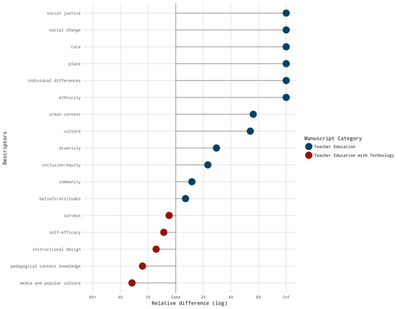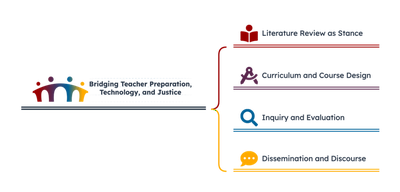Bridging Teacher Preparation, Technology, and Justice

Understanding the Context
Compared to the broader field of Research on Teacher Education, Research on Teacher Education with Technology is far behind in terms of understanding the teacher preparation process as an act that prepares people to engage in identity and cultural work to promote justice, equity, and inclusion in classrooms for each student.

Informing and informed by research and policy, the coursework and preparation programs in which preservice educators experience are reflective of these trends. It is therefore necessary to engage in intentional moves, practices, and discourses to bring about change in the field.
Mapping an Approach
In order to facilitate this necessary shift in the field of Research on Teaching, I am intentionally engaged in four intertwined activities.

Literature Review as Stance
Literature reviews as a genre help us understand the field as it is and recognize opportunities for paths forward. My literature review process includes a novel approach to understanding not just the literature that comprises the field, but also their relationships and ways in which themes such as justice, equity, and inclusion represents a large gap for the field.
Curriculum and Course Design
Preservice teachers are prepared through coursework and guided experiences. An important direction is to orient these experiences through culturally relevant pedagogy and universal design for learning. These frameworks provide a lens for preservice and inservice teachers to consider their work with justice, equity, and inclusion in mind.
Inquiry and Evaluation
Reflective practice and justice-oriented praxis as a teacher educator is an important aspect of this work. I therefore engage in regular self-studies and evaluations using a range of data sources, such as my curriculum, student artifacts and feedback, and student evaluations.
Dissemination and Discourse
Publications, presentations, reports, and tools are material ways of impacting the field. I engage in producing a range of artifacts for different audiences (researchers, practitioners, policy makers) to faciliate shifts in the field.
